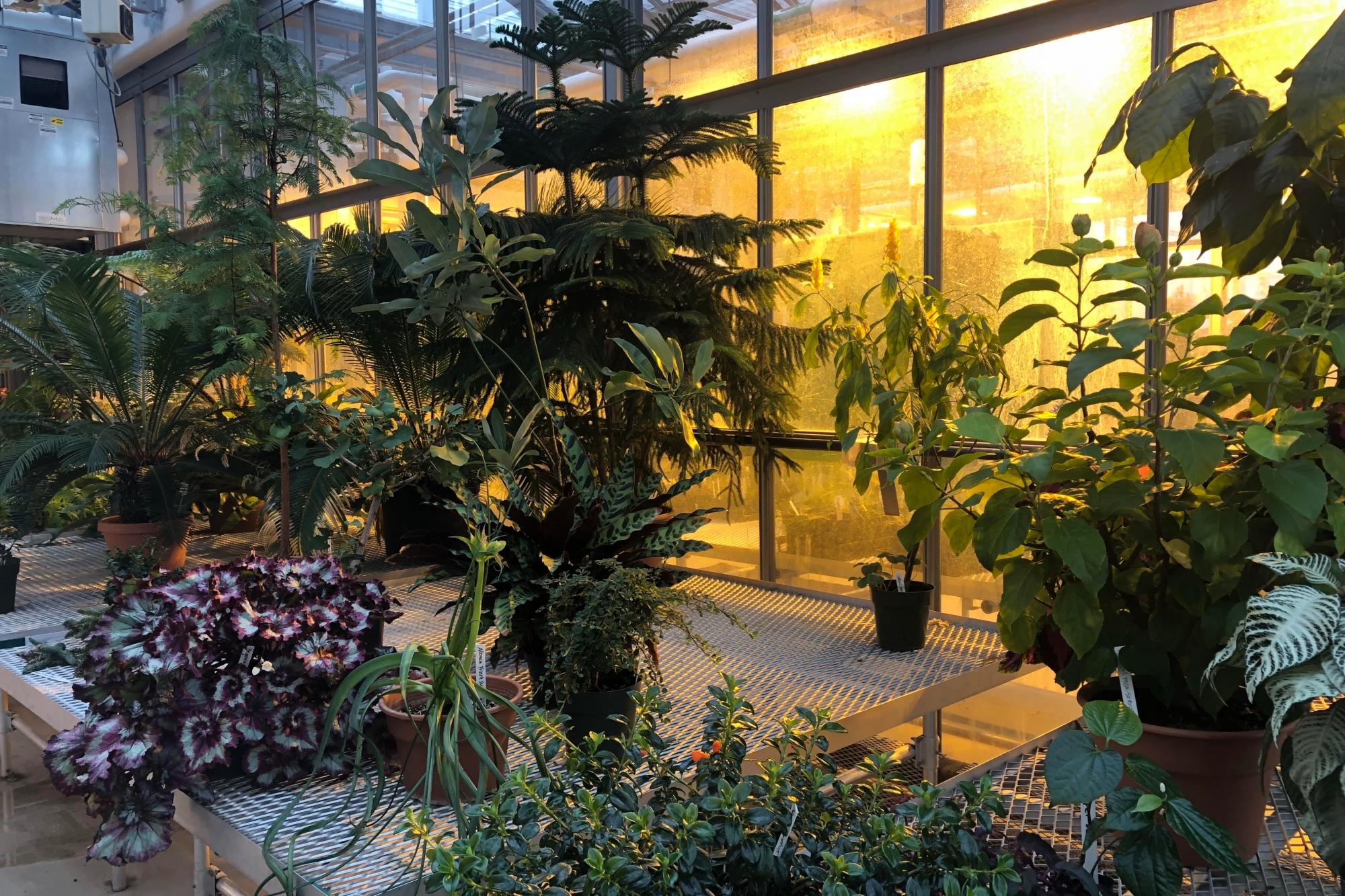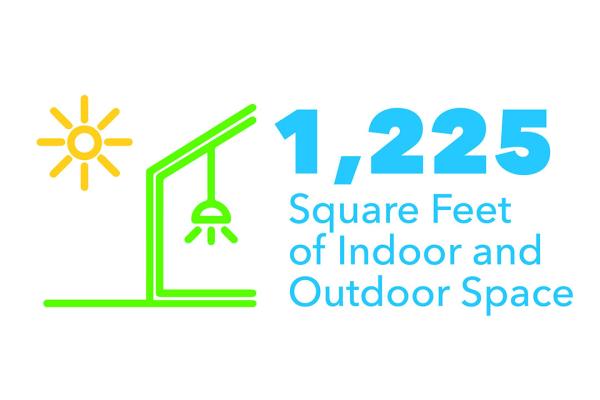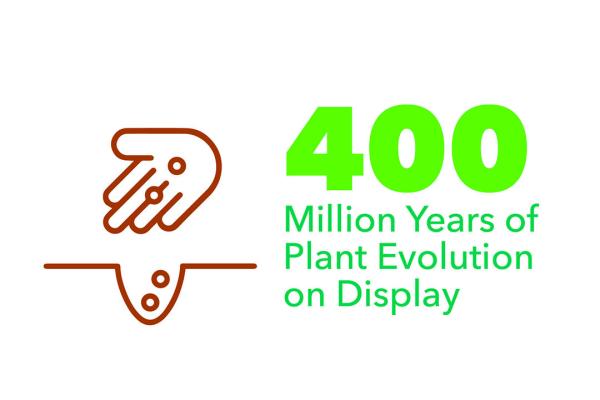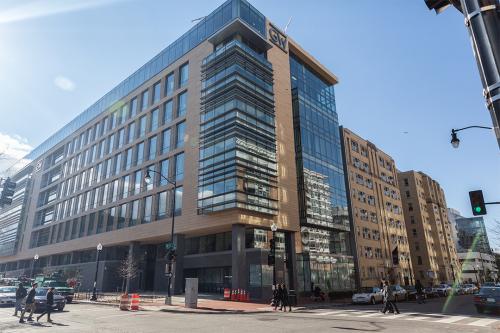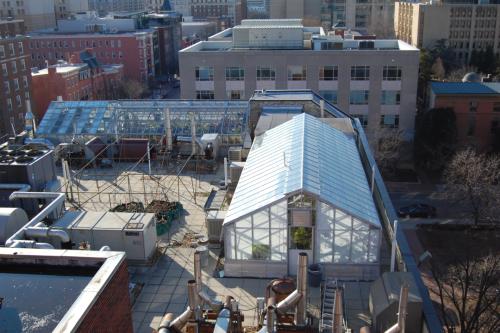Research Facilities
GW’s facilities and labs foster a wide range of biological research. At the Science and Engineering Hall, Wilbur V. Harlan Greenhouse and Bell Hall, scholars work with students to forge new pathways of discovery.
Wilbur V. Harlan Greenhouse
Located on the top floor of Science and Engineering Hall, the 1,225-square-foot greenhouse opened in 2017. The rooftop facility is home to plants that support research on insects, climate change, genetic diversity and other active projects.
Visitors can take a walk through time at the green facility to understand how plants have evolved over millions of years, and students are invited to study on the terrace, visit during open hours or apply for positions caring for the plants.
- Visit the Greenhouse
-
Science and Engineering Hall, Room 8546
800 22nd St. NW
Washington, DC 20052
rcanalichio gwu [dot] edu (rcanalichio[at]gwu[dot]edu)
gwu [dot] edu (rcanalichio[at]gwu[dot]edu)Visits by appointment only. Contact the rcanalichio
 gwu [dot] edu (greenhouse manager) with questions.
gwu [dot] edu (greenhouse manager) with questions. - Apply for Greenhouse Funding
-
The Harlan Greenhouse offers funding to help undergraduate students, graduate students and faculty conduct research in the greenhouse. Application is open year-round.
- Request Greenhouse Space
-
Are you interested in conducting research at the Harlan Greenhouse?
Prior to requesting research space, please read the Harlan Greenhouse Rules and Regulations (PDF). Then, fill out and submit this form to the Greenhouse Manager Rachel Canalichio rcanalichio
 gwu [dot] edu (rcanalichio[at]gwu[dot]edu).
gwu [dot] edu (rcanalichio[at]gwu[dot]edu). - Volunteer at the Greenhouse
-
If you are interested in volunteering in the Harlan Greenhouse please rcanalichio
 gwu [dot] edu (contact the greenhouse manager). Applications are due two weeks after the start of the semester you're interested in volunteering for. (ex. Fall Semester application deadline - September 14) If you miss the application deadline, your application will be considered for the following semester.
gwu [dot] edu (contact the greenhouse manager). Applications are due two weeks after the start of the semester you're interested in volunteering for. (ex. Fall Semester application deadline - September 14) If you miss the application deadline, your application will be considered for the following semester.
Greenhouse by the Numbers
Science and Engineering Hall
The Science and Engineering Hall (SEH) on the Foggy Bottom Campus houses state-of-the-art laboratories, lecture halls and core research facilities. With 500,000 square feet of teaching and research space and an open layout, the facility is designed to encourage innovative, interdisciplinary cooperation across the sciences.
Designated biology classrooms in SEH include a molecular biology classroom and an ecology classroom on the eighth floor, which connects to the Wilbur V. Harlan Greenhouse.
Bell Hall
Bell Hall houses molecular biology laboratories, a microscopy room with a Leo scanning electron microscope (SEM), a common instrumentation room, a computer room with scanners and microcomputers, fossil preparation rooms and a rooftop greenhouse. Bell Hall is also home to teaching facilities and vehicles that are made available for faculty and student fieldwork.
Visit Bell Hall
2029 G St. NW
Room 302
Washington, D.C. 20052
Other Facilities
- The GW Institute for Biomedical Studies includes a microchemistry core facility with an oligonucleotide synthesizer, an electron microscope (EM) and a confocal microscopy suite.
- Gelman Library and Himmelfarb Health Sciences Library house 1.38 million volumes and are part of the Washington Research Libraries Consortium, facilitating loans among area university libraries.
- On GW’s Virginia Science and Technology Campus, the Computational Biology Institute brings together leading educators, researchers, engineers and clinicians to find scientific solutions to global health and environmental problems.


